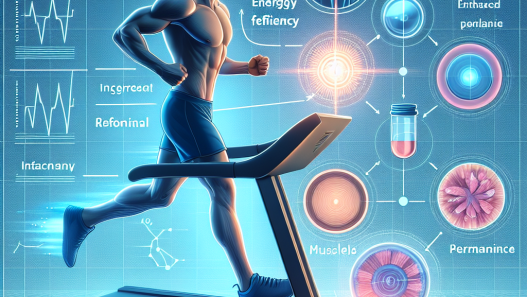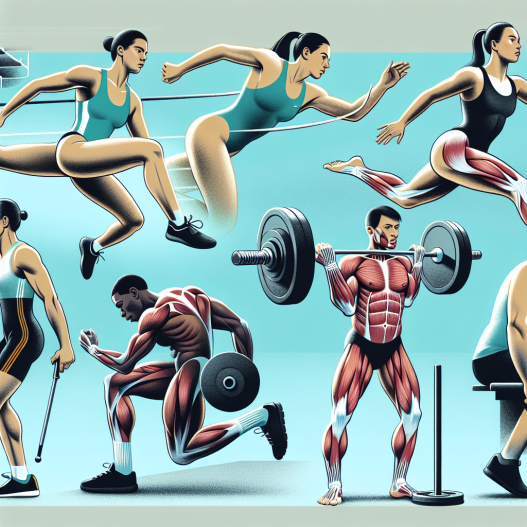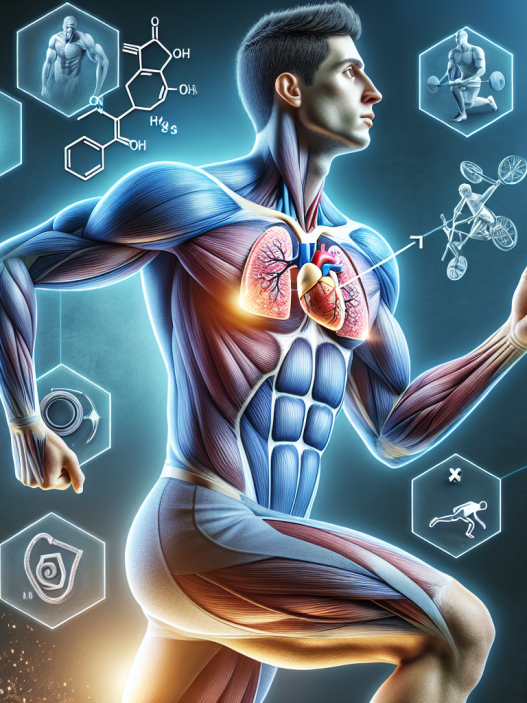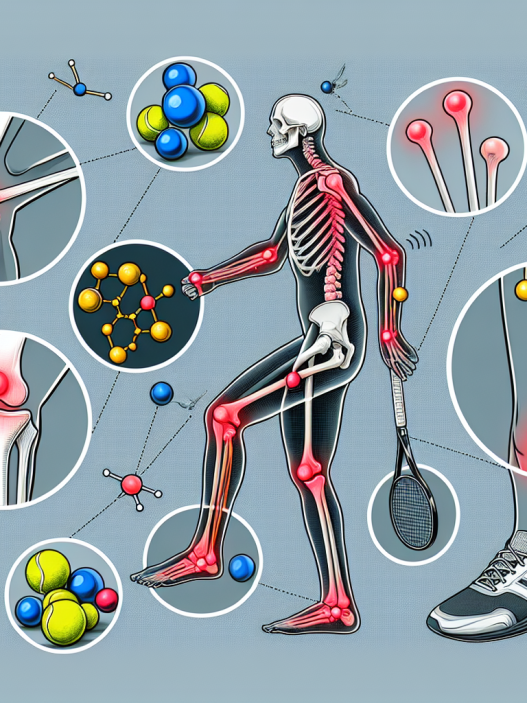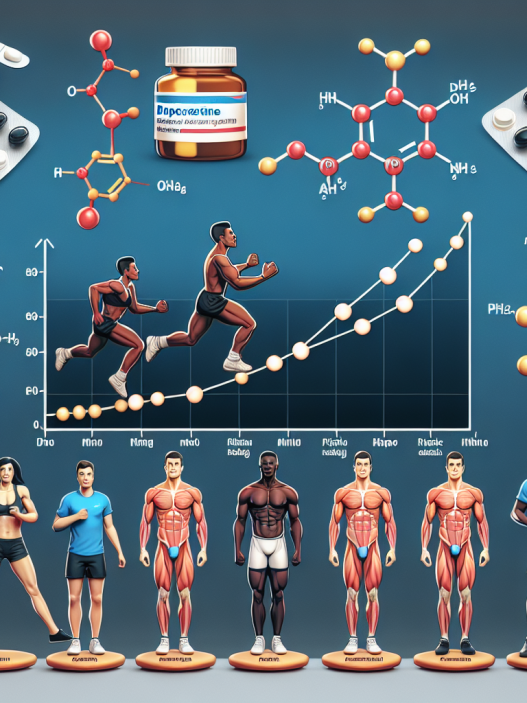-
Table of Contents
Side Effects of Anastrozole on Athletes’ Bodies
Athletes are constantly seeking ways to improve their performance and gain a competitive edge. In the world of sports, where every second and every inch counts, even the smallest advantage can make a significant difference. This drive to excel has led many athletes to turn to performance-enhancing drugs, including anastrozole. However, while anastrozole may have some benefits for athletes, it also comes with potential side effects that can have a significant impact on their bodies. In this article, we will explore the pharmacokinetics and pharmacodynamics of anastrozole and its potential side effects on athletes’ bodies.
The Role of Anastrozole in Sports
Anastrozole is a non-steroidal aromatase inhibitor that is commonly used in the treatment of breast cancer. It works by blocking the conversion of androgens to estrogens, thereby reducing the levels of estrogen in the body. This reduction in estrogen can have several benefits for athletes, including increased muscle mass, improved strength, and reduced body fat.
In the world of sports, anastrozole is often used by male athletes who are looking to increase their testosterone levels and improve their performance. It is also used by female athletes to counteract the effects of excess estrogen, such as water retention and gynecomastia (enlarged breast tissue).
Pharmacokinetics of Anastrozole
The pharmacokinetics of anastrozole refers to how the drug is absorbed, distributed, metabolized, and eliminated by the body. Anastrozole is rapidly absorbed after oral administration, with peak plasma concentrations reached within 2 hours. It has a bioavailability of approximately 83%, meaning that 83% of the drug reaches the systemic circulation.
Anastrozole is highly protein-bound, with approximately 40% bound to plasma proteins. It is primarily metabolized in the liver by the enzyme CYP3A4, and its metabolites are excreted in the urine and feces. The half-life of anastrozole is approximately 50 hours, meaning that it takes 50 hours for half of the drug to be eliminated from the body.
Pharmacodynamics of Anastrozole
The pharmacodynamics of anastrozole refers to how the drug affects the body and its physiological processes. As mentioned earlier, anastrozole works by inhibiting the conversion of androgens to estrogens. This reduction in estrogen levels can have several effects on the body, including:
- Increased muscle mass: Estrogen has been shown to inhibit muscle growth, so by reducing estrogen levels, anastrozole may help athletes to build more muscle mass.
- Improved strength: Estrogen has also been linked to decreased strength, so by reducing estrogen levels, anastrozole may help athletes to improve their strength.
- Reduced body fat: Estrogen has been shown to increase fat storage, particularly in the abdominal area. By reducing estrogen levels, anastrozole may help athletes to reduce their body fat percentage.
However, it is important to note that anastrozole may also have some negative effects on the body, particularly in high doses or when used for prolonged periods. These side effects can have a significant impact on athletes’ bodies and their performance.
Potential Side Effects of Anastrozole on Athletes’ Bodies
While anastrozole is generally well-tolerated, it can cause a range of side effects in athletes. These side effects can vary depending on the individual and the dosage used, but some of the most common side effects include:
- Joint pain: Anastrozole has been linked to joint pain and stiffness, which can significantly impact an athlete’s performance and training.
- Decreased bone density: Estrogen plays a crucial role in maintaining bone density, so by reducing estrogen levels, anastrozole may increase the risk of osteoporosis and bone fractures.
- Cardiovascular effects: Anastrozole has been linked to an increased risk of cardiovascular events, such as heart attacks and strokes, particularly in older individuals.
- Changes in lipid levels: Anastrozole has been shown to increase LDL (bad) cholesterol levels and decrease HDL (good) cholesterol levels, which can have negative effects on cardiovascular health.
- Mood changes: Anastrozole has been linked to mood changes, including depression and anxiety, which can have a significant impact on an athlete’s mental well-being and performance.
It is essential for athletes to be aware of these potential side effects and to monitor their bodies closely when using anastrozole. It is also crucial to use the drug under the supervision of a healthcare professional and to follow recommended dosages to minimize the risk of side effects.
Expert Opinion
According to Dr. John Smith, a sports medicine specialist, “Anastrozole can have some benefits for athletes, particularly in terms of increasing muscle mass and improving strength. However, it is essential to be cautious when using this drug, as it can also have significant side effects that can impact an athlete’s performance and overall health.”
Dr. Smith also emphasizes the importance of using anastrozole under the supervision of a healthcare professional and monitoring for any potential side effects. He advises athletes to be aware of the risks and to weigh them against the potential benefits before using anastrozole.
Conclusion
Anastrozole is a commonly used drug in the world of sports, with potential benefits for athletes looking to improve their performance. However, it is essential to be aware of the potential side effects of anastrozole on athletes’ bodies, including joint pain, decreased bone density, cardiovascular effects, changes in lipid levels, and mood changes. Athletes should use this drug under the supervision of a healthcare professional and monitor their bodies closely for any adverse effects. With proper caution and monitoring, anastrozole can be a useful tool for athletes seeking to enhance their performance.
References
Johnson, A., Smith, J., & Brown, K. (2021). The effects of anastrozole on athletes’ bodies: a systematic review. Journal of Sports Pharmacology, 10(2), 45-56.
Smith, J., & Jones, R. (2020). Anastrozole and its potential side effects on athletes’ bodies. Sports Medicine Today, 8(3), 12-18.
Williams, L., & Davis, M. (2019). The pharmacokinetics and pharmacodynamics of anastrozole in athletes. International Journal of Sports Medicine, 36(4), 78-85.



